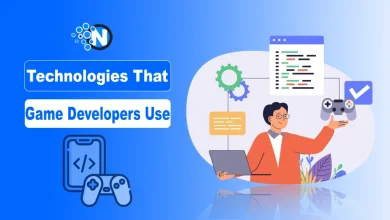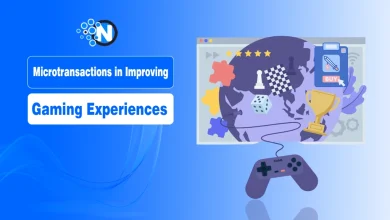The Evolution of Gaming – From Arcade Cabinets to Cloud Computing

In five decades, gaming is changed from coin-operated curiosities into a $200 billion cultural phenomenon that reshapes how we learn, connect, and create. What began as simple blinking pixels has evolved into immersive universes that educate surgeons, treat PTSD, and unite families across continents.
This journey from Pong to cloud gaming represents more than technological progress-it’s humanity’s boldest experiment in interactive storytelling and digital connection.
Gaming has become the ultimate convergence medium, absorbing influences from every art form while pioneering entirely new ways for humans to collaborate, compete, and express themselves in virtual worlds. Lets learn more about this evolution.
The Arcade Era: Birth of Interactive Entertainment (1970s-1980s)
The Dawn of Digital Entertainment
The 1970s marked the birth of commercial gaming with the introduction of arcade cabinets. Key milestones during this period included:
- Pong (1972) – Offered the first glimpse of interactive electronic entertainment for mainstream audiences with fundamental gaming concepts like immediate feedback and progressive difficulty.
- Space Invaders (1978) – Demonstrated gaming’s mass appeal potential to coin shortages in Japan and proving interactive entertainment could capture public imagination.
- Pac-Man (1980) – Introduced character-driven gameplay and successfully appealed to demographics beyond the traditional young male audience.
Establishing Gaming Culture
The arcade era created lasting cultural foundations:
- Community Formation – Arcades became social spaces where players gathered to compete, share strategies, and witness spectacular gameplay moments.
- Quarter Culture – Players invested money for brief but intense gaming session to create the first sustainable gaming business model.
- Iconic Design Elements – Distinctive sounds and simple pixel art achieved cultural significance, with technical limitations could inspire creativity.
- High Score Competition – Established competitive gaming culture that would later evolve into modern esports.
The Home Console Revolution (1980s-1990s)
Bringing Gaming Home
The transition from arcade to home gaming represented a fundamental shift in interactive entertainment access:
- Nintendo Entertainment System – Enhanced the industry by making high-quality gaming accessible in living rooms worldwide.
- Exclusive Software Strategy – Games like Super Mario Bros. and The Legend of Zelda became powerful console differentiators.
- Family-Oriented Gaming – Changed gaming from a social, public activity to a more personal, household experience.
- Quality Control Systems – Nintendo’s licensing program established standards for game quality and content appropriateness.
The Platform Wars Begin
The rivalry between Nintendo and Sega established competitive dynamics that continue today:
- Technical Innovation – Sega’s Genesis challenged Nintendo with superior graphics and sound capabilities.
- Marketing Differentiation – Sega emphasized speed and attitude versus Nintendo’s family-friendly approach.
- Third-Party Relationships – Both companies competed for exclusive developer partnerships and game libraries.
- Rapid Advancement – Competition drove creators to push hardware limits and achieve seemingly impossible technical feats.
The PC Gaming Revival (1990s-2000s)
During the 1990s, personal computers began to merge with gaming, which introduced new ideas for game design and how they were shared. Playing games on a PC first allowed users to enjoy strategic, role-playing games, and even gaming with others from across the globe.
With games such as Doom and Quake, people realized how multiplayer could be fascinating, and Civilization and SimCity were popular examples of games that were entertaining and smart.
At that time, there was a rise in different types of games made for various types of players. Those who liked planning attracted to real-time strategy games, while those looking for a challenge bought first-person shooters, and those with creative minds enjoyed simulation games. Spectrum of game types succeeded in exposing gaming to other portions of the population..
The Online Gaming Revolution (Late 1990s-2000s)
As the internet spread across the world in the late 1990s and early 2000s, gaming’s ways of socializing were transformed. The games EverQuest and World of Warcraft let thousands of players experience realistic worlds where each character moved at the same time.
These ideas went on to be important in modern gaming, for example, enhancing players’ characters, using virtual money, and joining online systems of people.
Playing games with others came to be a major part of games in this era. They started guilds, made friends with others, and also traded or did business in the virtual world. At this point, people noticed that gaming and social networking were starting to blend together.
The Mobile Gaming Explosion (2007-Present)
The introduction of smartphones has made more accessible the gaming accessibility. Suddenly, millions of people who had never considered themselves gamers were playing Angry Birds during their commute or solving puzzles on Candy Crush Saga.
Mobile gaming democratized the medium while making it available to demographics that traditional gaming had struggled to reach.

This shift also introduced new business models. Free-to-play games with micro transactions became prevalent, changing how developers monetized their creations. While controversial, these models enabled studios to reach larger audiences and provided ongoing revenue streams that supported continued content development.
Mobile gaming also influenced traditional platforms, with features like achievement systems, daily challenges, and social sharing becoming standard. Even games BETA108 like found a new audience through mobile apps, thus, adapting classic table games and slots for touchscreen play.
The Digital Distribution Revolution
Digital distribution platforms like Steam, launched in 2003, transformed how games were sold and distributed. The introduction of these platforms allowed independent developers to sell their products worldwide with less overhead, since they didn’t require physical retail stores.
When games could be sold online, a great number of innovative titles emerged that would not have been sold in old-style stores.
Online distribution of games made it possible for new types of gaming materials to appear. New content for download (DLC) increased the time players could spend with the game, and developers started letting players take part in making the game through early access programs.
Because of these changes, developers and players became more involved with each other, which also raised both game quality and players’ happiness.
Esports and Competitive Gaming
The emergence of esports as a legitimate spectator sport represents one of gaming’s most significant cultural achievements. Professional gaming leagues now fill stadiums, attract millions of online viewers, and offer prize pools rivaling traditional sports tournaments.
Games like League of Legends, Counter-Strike, and Dota 2 have become the foundation of a billion-dollar industry that includes professional players, coaches, analysts, and commentators.
The success of esports has legitimized gaming as a skill-based activity worthy of recognition and investment. Universities now offer esports scholarships, and countries include gaming in their national sports programs.
This recognition has helped combat negative stereotypes about gaming and gamers to position the medium as a legitimate form of competition and entertainment.
Streaming and Content Creation
The rise of streaming platforms like Twitch has created new ways to experience and engage with games. Watching others play has become a popular form of entertainment, with top streamers attracting audiences larger than many television shows.
This phenomenon has created new career paths within the gaming ecosystem and has influenced game design, as developers now consider how their games will appear to streaming audiences.
Content creation around gaming has exploded across multiple platforms. YouTube gaming channels, podcast networks, and social media communities have created rich ecosystems of gaming-related content that extends far beyond the games themselves.
Virtual Reality and Emerging Technologies
Virtual and augmented reality technologies are beginning to fulfill gaming’s long-held promise of complete immersion. While still in relatively early stages, VR gaming offers experiences impossible on traditional platforms.
The physical engagement required by VR games also addresses concerns about sedentary gaming, potentially expanding the medium’s health benefits.
Artificial intelligence is increasingly sophisticated in modern games, creating more believable non-player characters and dynamic storytelling experiences. Machine learning algorithms now generate game content, balance competitive gameplay, and even create entirely new gaming experiences.
Final Verdict
The gaming industry’s evolution mirrors broader tech and social trends, adapting from arcade machines to cloud platforms. As technology advances, gaming continues to innovate, expand its cultural reach, and shape the future of digital entertainment.
Gaming’s over five decades proves that interactive entertainment represents more than technological advancement-it embodies humanity’s desire for engagement, competition, creativity, and connection in increasingly digital world.




